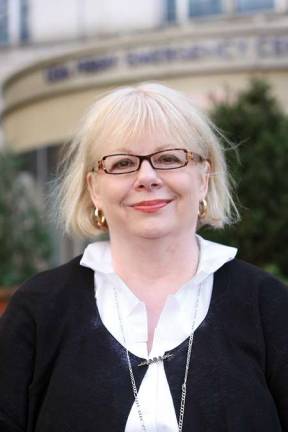2012 OTTY Awards: A Comforting Presence in the Emergency Room

By Sarah Amandolare Constance Peterson admits her job is intense. As director of patient services for the emergency department at New York Presbyterian Hospital, Peterson encounters pain and suffering on a daily basis. "Short of on the battlefield," she said, "most people in their work life don't experience this." Peterson, 58, has directed what's called "comfort care" since 1995. She and her staff of 20 employees and 80 volunteers ensure that ER patients and their families are taken care of from the moment they walk though the doors. She is also the liaison between patients and other clinical departments in the hospital. In the ER, where people are often frightened and overwhelmed, Peterson and her staff try to instill calm. They make rounds every 30 minutes, offering warm blankets, delivering cups of hot chocolate, providing bedside phones and updating patients' families as often as possible, all in an effort to assuage anxiety. "It's like entering a foreign country," Peterson said. "The ER has its own language and its own rules. There's a lot of fear." She created the volunteer program in 1995 with just one person; she was the only staff member. Now she leads a team of volunteer medical students and staffers are nurses and clinicians. Collectively, they bring a level of knowledge and expertise to the program, which, Peterson said, sets New York Presbyterian's ER apart from others in New York and throughout the country. "I look for a certain personality that can withstand the pressure and the very strong emotions that come up here," she said. "I tell my staff that they must be the calm presence." Peterson studied cultural anthropology and sociology in her native Missouri, which could account for her skill with people. When she moved to New York to pursue graduate studies in health administration at Sarah Lawrence College, she fell for the city's diversity. Working in health care gives her constant access to the melting pot. "Our patients come from all over the country and the world," she said. "In the ER, it's egalitarian." It's also crowded. Hundreds of patients enter the ER on a daily basis, and because the hospital has programs devoted to burns, pediatrics and psychiatry, they present an extraordinary range of conditions. Peterson doesn't deal with thorny issues like diagnoses, insurance or immigration status, which allows her to focus on the patient. "While they're here, they have questions. We can connect them with resources," she said. Peterson lives on the Upper East Side in the same neighborhood where she works, affording her an intimate knowledge of the concerns and conditions facing locals. It's an aging population, which presents distinct challenges. If an elderly spouse is brought into the ER, Peterson and her staff look out for his or her other half. "Maybe they need a reminder to take their meds," she said. "It's the small acts of kindness." Focusing on the little things keeps Peterson going without getting bogged down by the unpredictable nature of health care. Her industry may be in flux, but she embraces it. "We don't know the direction health care will go in the next decade, but the ER always has to be prepared for changes," she said. "I think we'll be prepared."